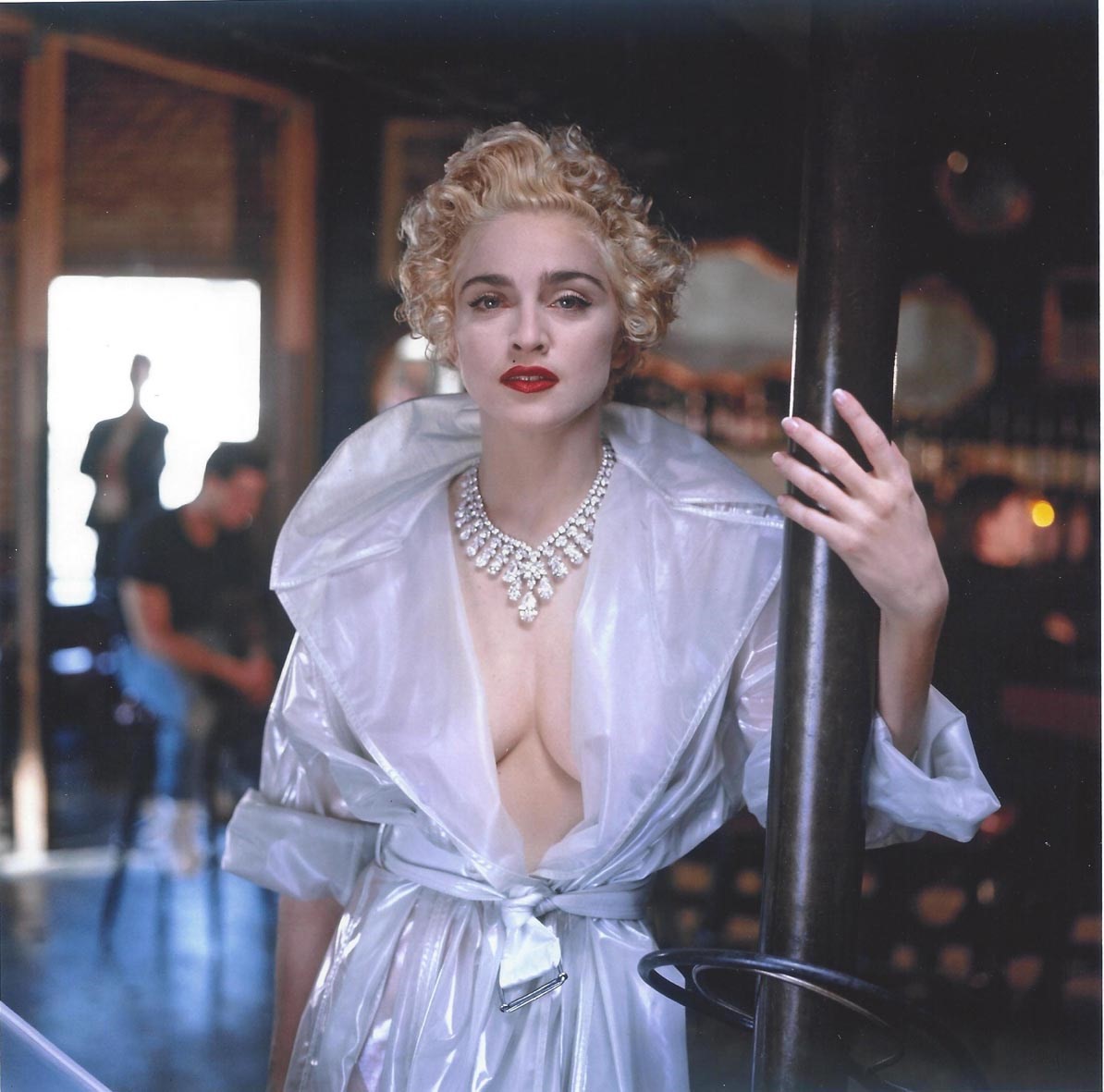Despite his dramatic departure on the eve of World War II from his birth city of Berlin, Helmut Newton had never forgotten its formative influence on his life and work. It was the place he had learned to be a photographer and where stark Nazi iconography played a major role in shaping his vision – even though he grew up in a Jewish family. He returned periodically to Berlin after the war to shoot fashion editorials and fondly revisited his old neighborhood as witnessed in the 2002 German documentary of his life, Mein Leben.
At the end of October, the Helmut Newton Foundation will fete the provocative fashion photographer throughout Berlin on what would have been his 100th birthday with Helmut Newton One Hundred. Photos spanning his career will be presented along an 85 meter-long wall in Kreuzberg in addition to City Light posters around the city and a viewing of the recently released documentary on Newton, The Bad and the Beautiful.
But who was this controversial figure behind the lens? And how did he conduct himself on photo shoots? Oft-mentioned were his unforgettable humour and undeniable reverence of bold women, connecting these five, distinct personal histories of candid, poignant observations – with a little bit of a wink.
Gero von Boehm
Gero von Boehm is the director of the 2020 documentary, The Bad and the Beautiful, and was a close friend and collaborator of Helmut Newton.
“I still think about him everyday: his sense of humour, his elegance, his positiveness. A monument is not a good word for Helmut. But I wanted to do something for his memory [The Bad and the Beautiful] and he shouldn’t be forgotten, because now he’s on the verge of being forgotten a little bit. Our time is so fast and he died over ten years ago and would have turned 100 this year and that’s a good reason to look back. It was his brand to do those provocative photographs. It would never be possible today. So it’s history we’re talking about.
“What I didn’t know before I met him, looking at his photographs, was that he had so much respect for women. Strong women. He explained that once to me because he said that’s the most interesting: their strength and openness and they’re much stronger than men. This perspective of women was actually a revelation. The photographs tell that but you have to know what the background is. And then I think what I discovered and liked about him was his positive thinking: He never said that something is impossible. He was a very positive person. And that’s the secret behind his willingness and eagerness to go back to Berlin starting in the 60s, and then in the 70s, and then in the 80s and 90s he was often in Berlin.”
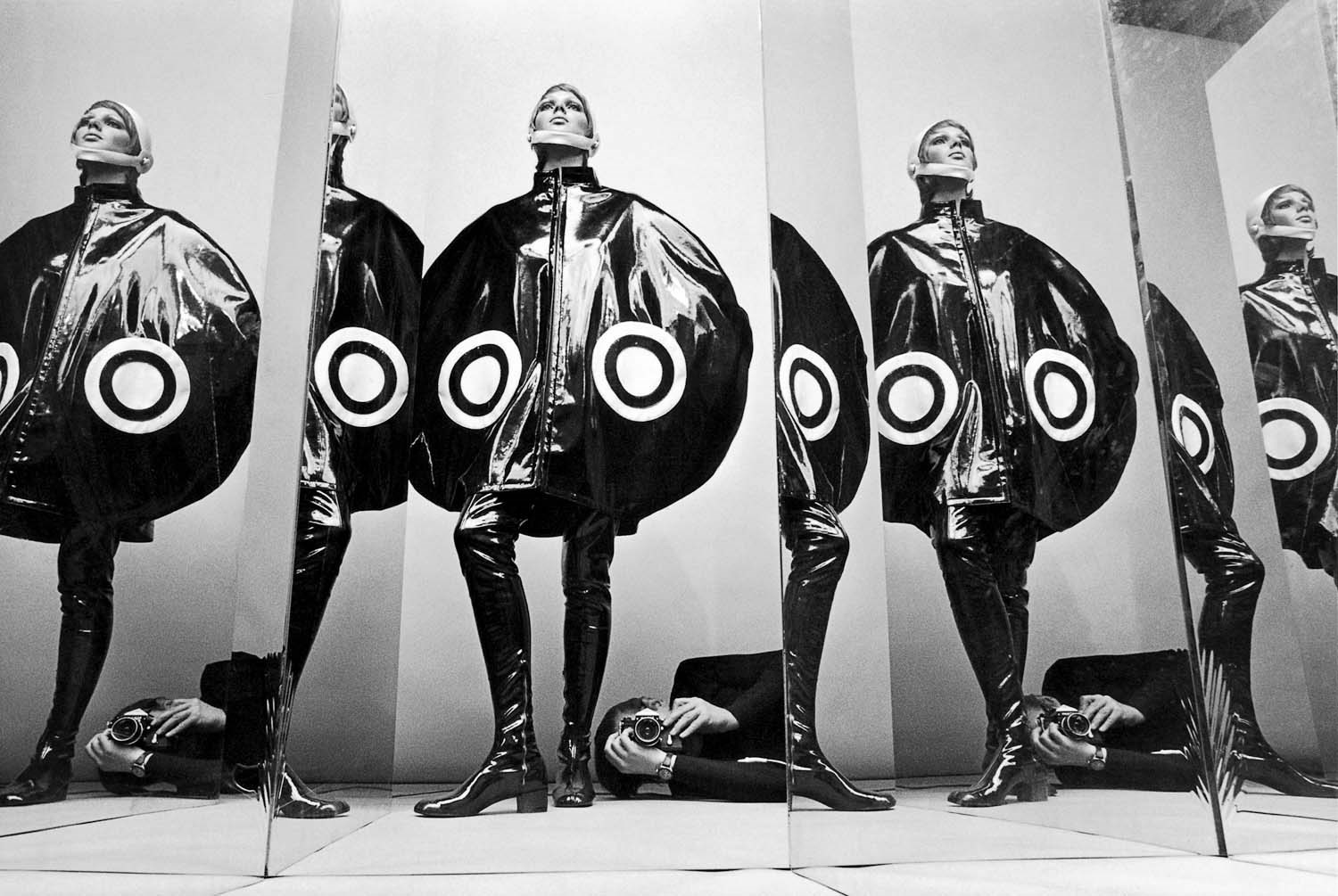
Sascha Lilic
Sascha Lilic is a London and Paris-based stylist who worked exclusively with Helmut Newton for over ten years.
“I used to be a hairdresser and a make-up artist. I was booked for a photoshoot by my agent in Strasbourg, France, early 90s. It was for this car [advertising campaign] and I only found out it was going to be with Helmut Newton when I got there. He was nothing I expected him to be in a way. He was an absolute gentleman and absolutely charming.
“We just started talking and we found out we had a lot of things in common: him being an immigrant and refugee leaving Germany and me being an immigrant and refugee having left the East Block (Yugoslavia). We clicked there and then and didn’t let go of each other until the day he died.
“I’ve learned everything about the industry that I know now through him. He had such a unique way of being. It was more about the humanity of it: how you deal with people on a photo shoot. He had a clear image in mind. On my side – doing the hair, the make-up and later the styling – it was creating that woman he had in mind and matching her into the story line. That got more and more intense through spending time together and then handling clients, models, editors or whoever there was on a shoot. It was extremely enlightening the way he did it. I have not seen this modus operandi with any other photographers so far. I ended up learning by doing and copying his [way of] being. It was sort of a father figure-ish thing because after ten years of being so close with somebody and so on top of each other, you exchange a lot of personal information and that helps you understand the person even more: the way he thinks and views things. To be able to handle people on a photoshoot without turning into an alcoholic or serial killer.”
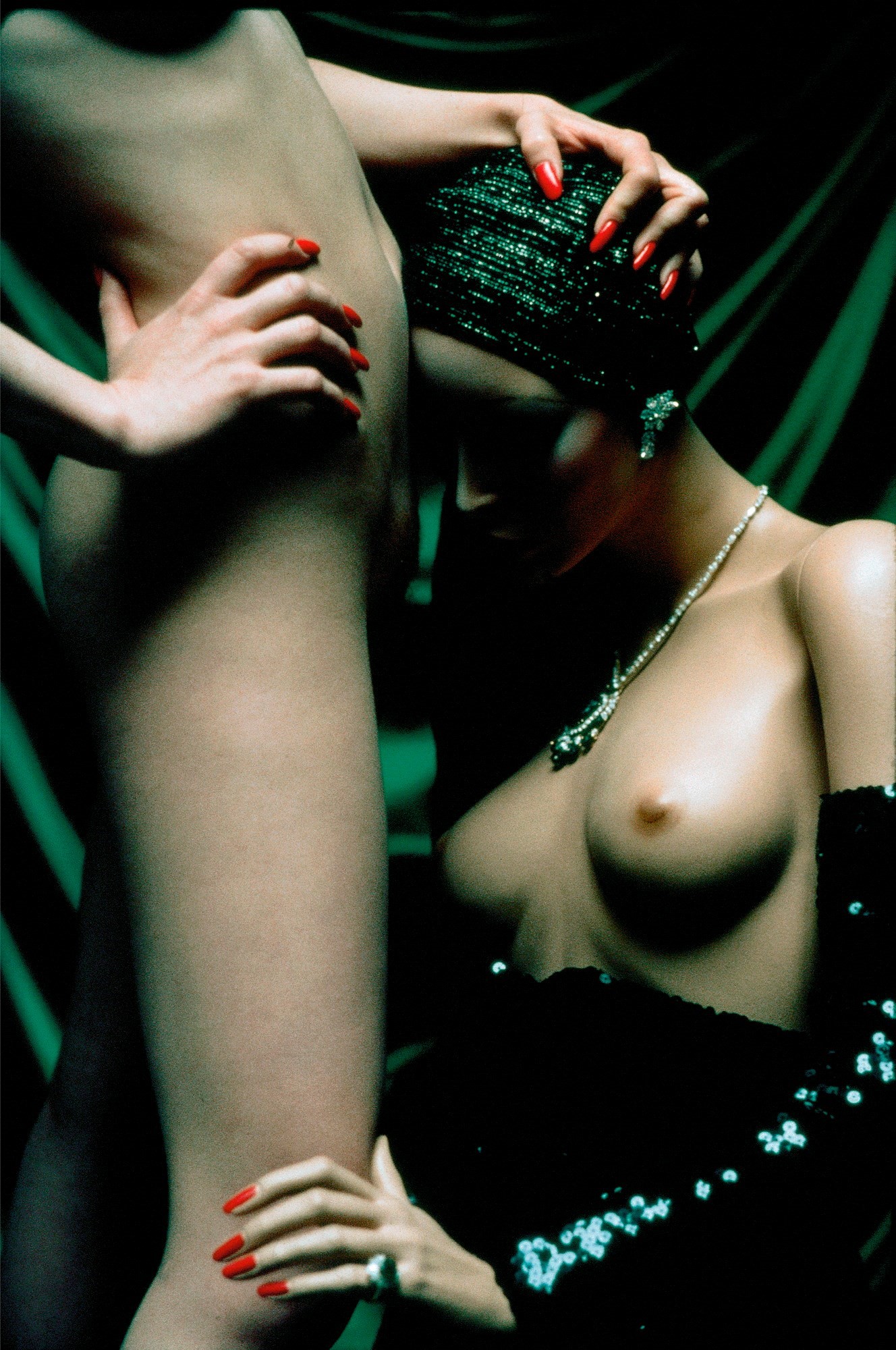
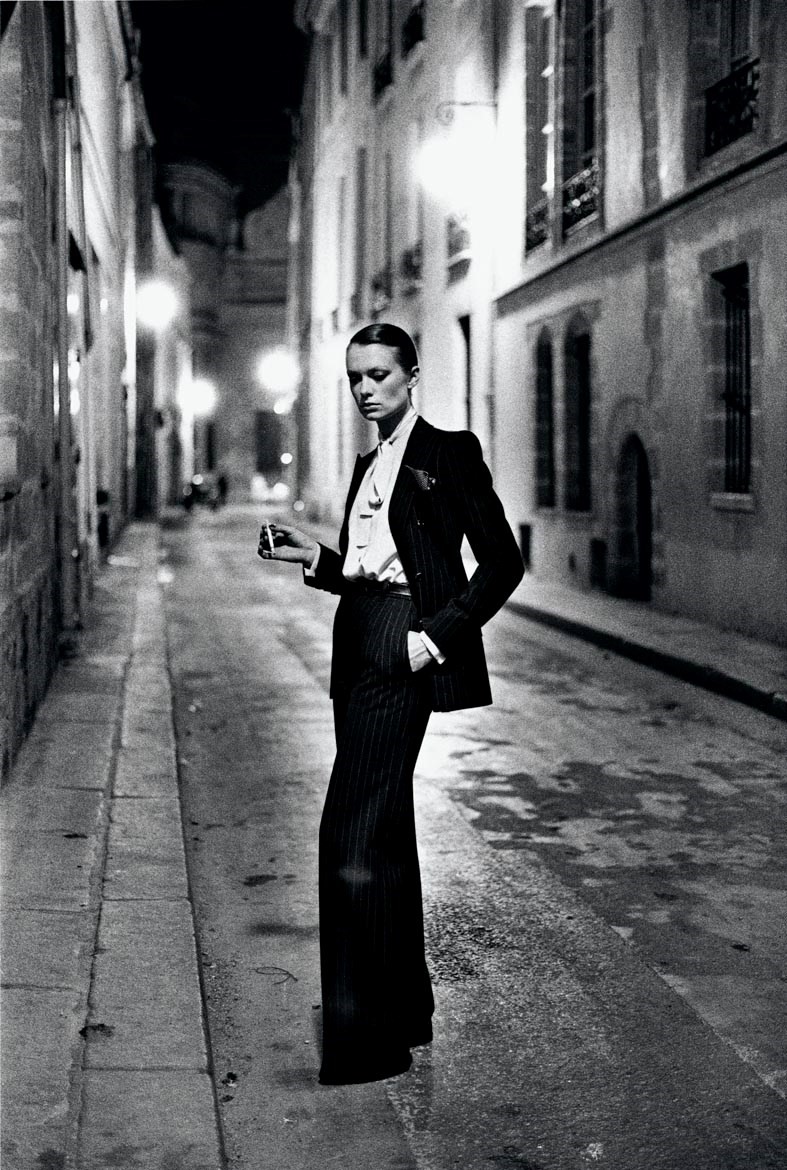
Sylvia Gobbel
Sylvia Gobbel was one of Newton’s muses and appeared in one of his most iconic photos, Sie Kommen (1981).
“He was very respectful as a man towards women. He loved strong women. He knew before myself that probably I was a strong woman. He admired women and always said women should rule the world, because they were stronger and wiser and never would make stupid decisions like men.
“He was a feminist. Even if feminists at that time in the 80s had another idea about Helmut because of his nudes. They misunderstood his work. Helmut Newton’s models were people who decided about themselves, their lives and their actions. Also June, his wife, was often on the set. He never took any decisions without her opinion.
“Helmut was certainly a perfectionist. He controlled the set, the styling, the hair, the make-up. He wanted to be sure everything would be as perfect as in his imagination. He told me the positions to take, where to look and I was lucky that I picked up his decisions immediately, because I understood what he meant. People think I’m still representing the ‘Helmut Newton woman’ and I’m flattered. Thanks to him, there will be something left of me on earth.
“My first photoshoot was the Dressed and Naked series for French Vogue, with special haute couture. So we immediately shot nudes together. Those nudes had nothing to do with seduction. They were here to show people that strong women are as strong dressed in haute couture as naked.
“We shared lots of laughter on set. I remember the AMICA campaign called The Seven Deadly Sins. We shot Gluttony. I had a kilo of caviar to lick for the picture. He stopped in the middle of the shoot and said laughing: ‘No, don’t eat it all! Leave some for me.’”
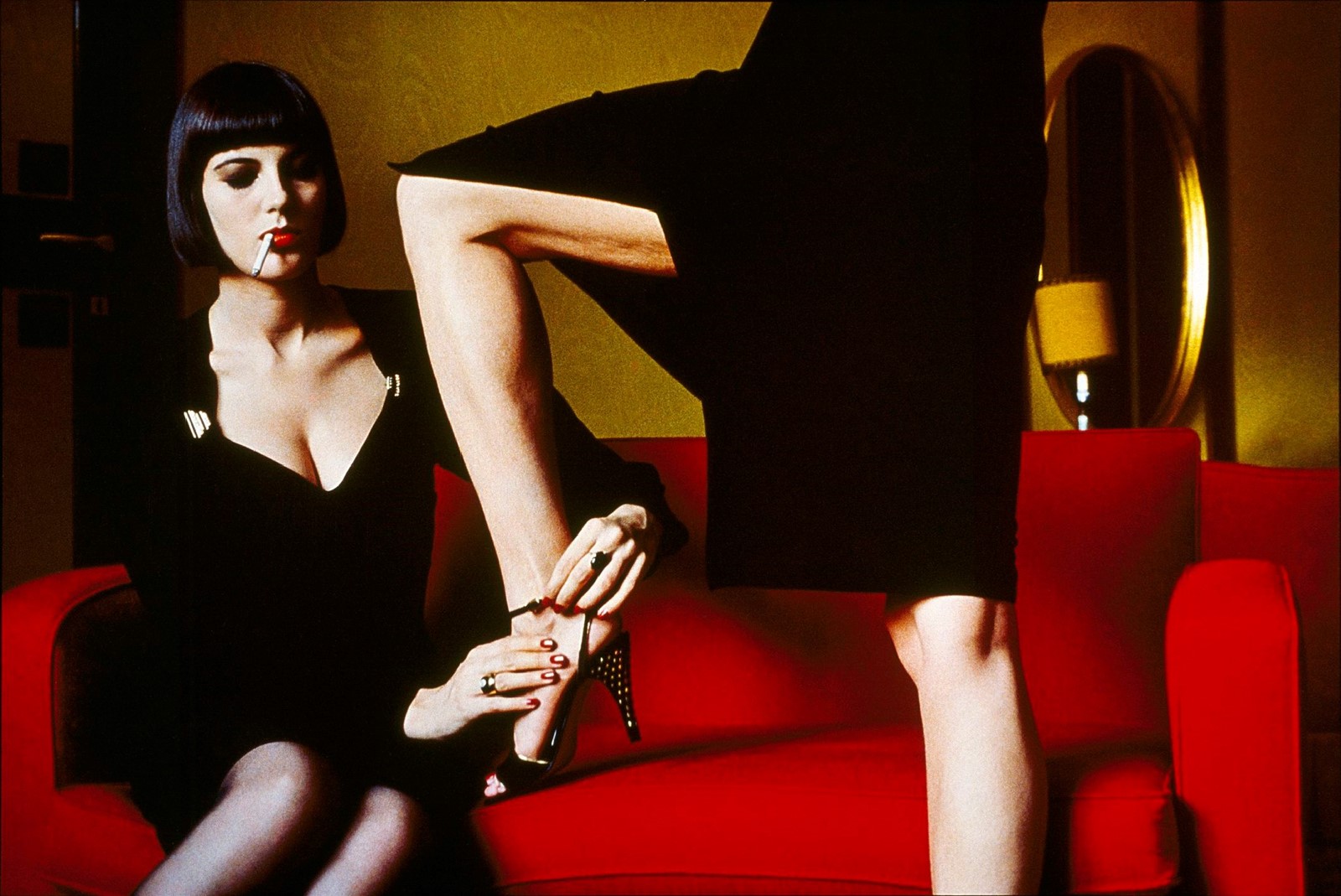
Ellen von Unwerth
Ellen von Unwerth is a German-born former model and prolific, boundary-pushing fashion photographer.
“Helmut Newton is for me definitely the most inspiring photographer of all times. His pictures show so much strength, provocation and humour, which is rare to find anywhere else.
“He used models to point out adventures of the bourgeois, the rich part of society and his own fantasies which were always a bit shocking but immensely intriguing. His light was not always the most flattering but the women looked strong, powerful, in control, and haunting.
“I worked with him only once as a model: it was not one of his best pictures. I didn’t even keep it. I guess I was not really his type, he liked curvy super women, while I was more like a skinny stick. But I was told that he loved my name: I guess that’s why he booked me in the first place.
“Later on when I started to be a photographer, I met him a couple of times and we talked together in German and had a good laugh. He also complimented me on my pictures which meant everything to me.
“I always think of him when I am at the Chateau Marmont hotel in Los Angeles where he took so many iconic pictures and left us with a crash. He was an amazing photographer which still makes me dream and keeps me on the lookout to see some of his exciting cliches happening in real life.”
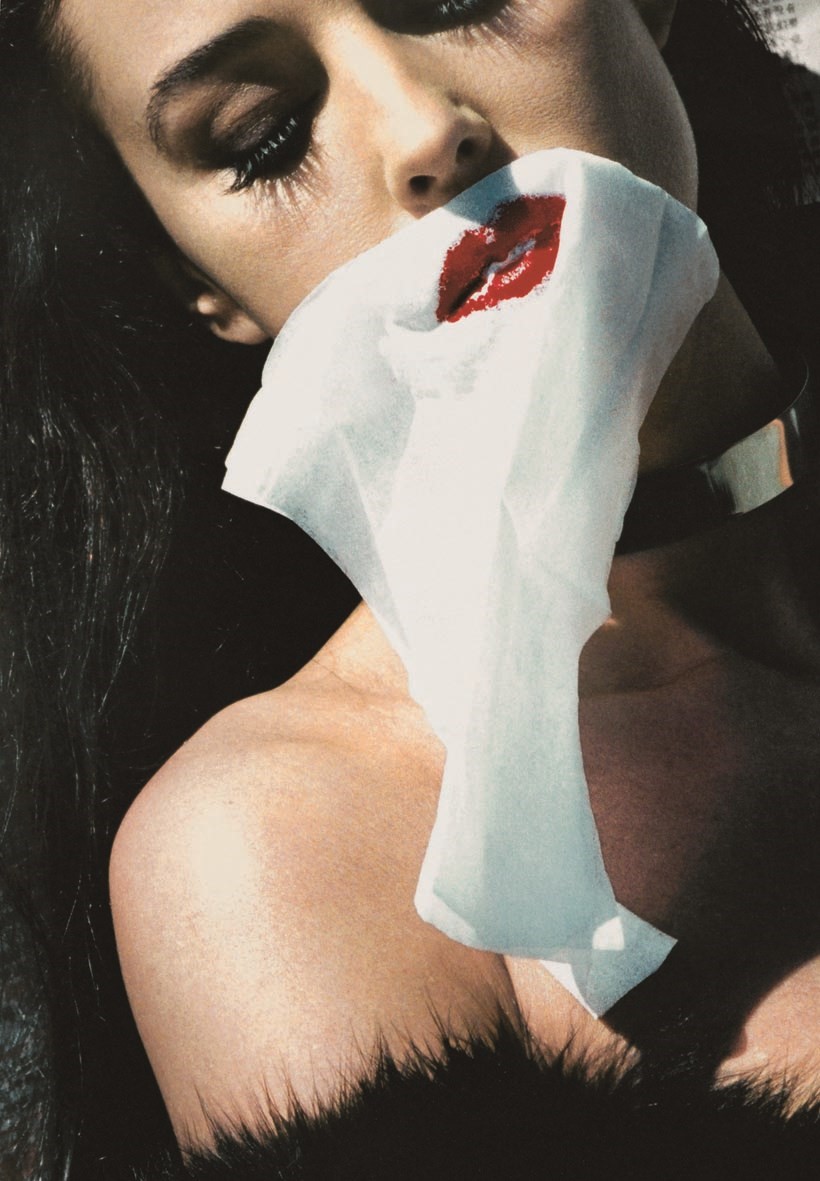
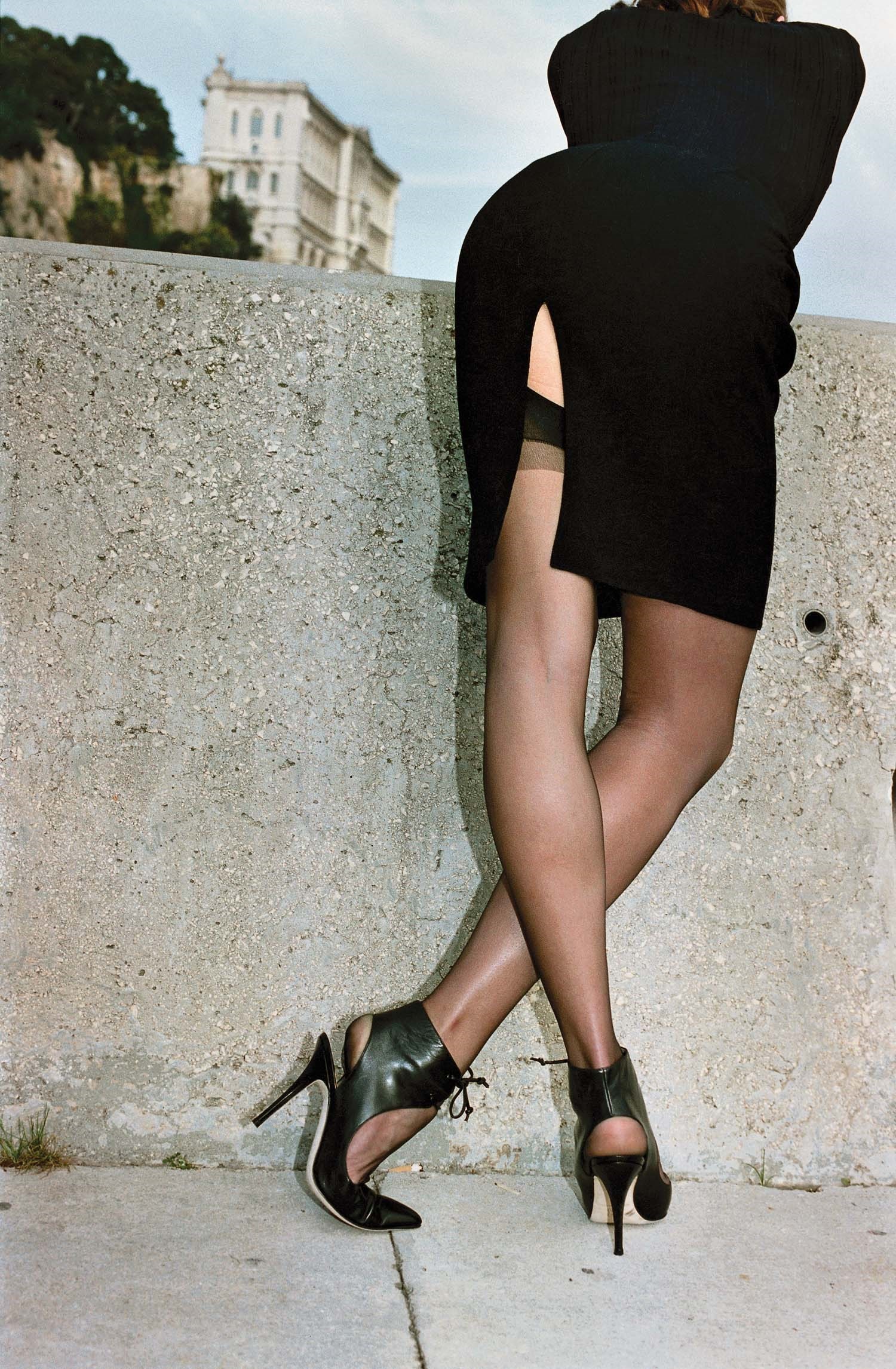
Cindy Crawford
Cindy Crawford is one the core 90s supermodel and continues to work as a businesswoman and model. She’s the mother of model Kaia Gerber.
“As soon as I became aware of Helmut Newton’s work, I knew I wanted to shoot with him. I loved his strong and unapologetically sexual portrayal of women but with his unique underlying sense of humour. My first opportunity to work with him was in Monte Carlo for American Vogue. I was not disappointed: Our first shot was me in a white bathing suit and heels with a group of blindfolded musicians – so Helmut!
“What surprised me about working with him was how he used his photographs to tell some imagined story – and the story could keep evolving with each click of his camera. ‘You’re a widow.’ Click. ‘But he was rich.’ Click. ‘And you have a hot young lover.’ Click.
“He would capture each thought as it registered on your face. He was funny and raunchy and playful and his wife June was in on the joke. He was a dream to work with because he knew exactly what he wanted and was able to give specific directions to get it. For example, there’s a shot from the Monte Carlo shoot where I am walking down stairs. His direction was, ‘When you walk down the stairs, keep your stride long, with straight legs that are a little bit apart.’ That little bit of awkwardness gave the image an underlying sexuality. I feel so fortunate to have had the chance to learn from such a master even though I always teased him that he would never get a saddle on me!”
Helmut Newton One Hundred is at Köpenicker Straße 70, 10179 Berlin from 31 October to 8 November 2020.
